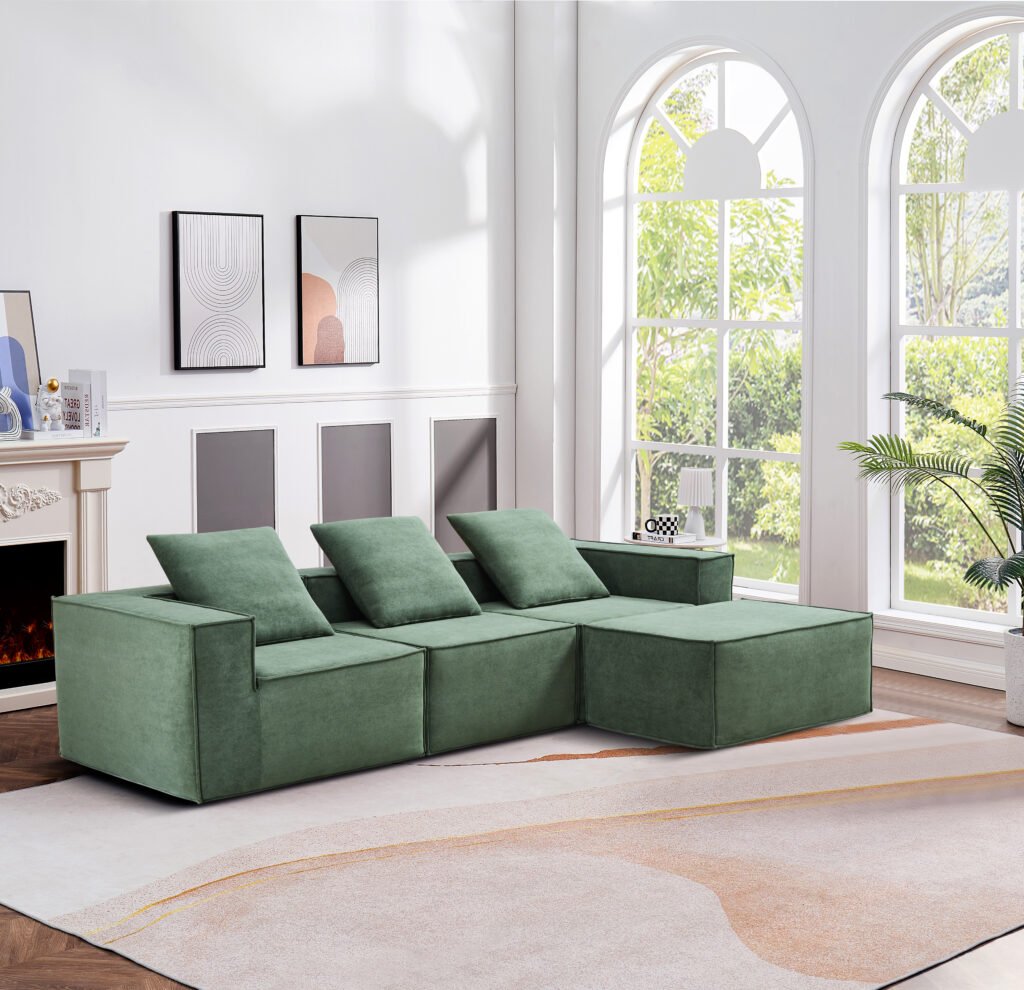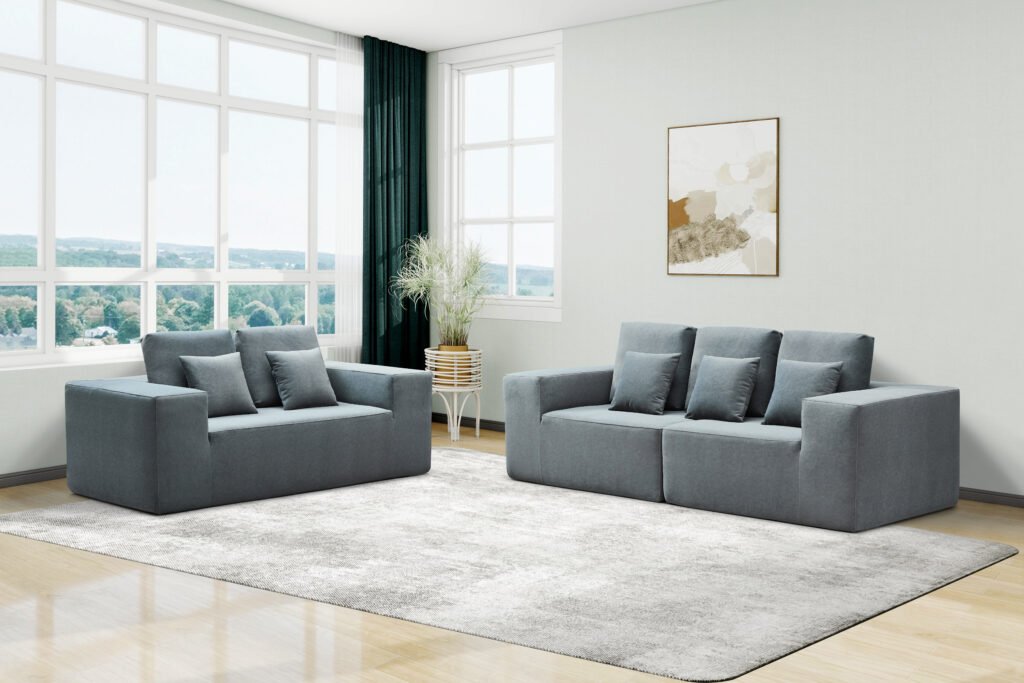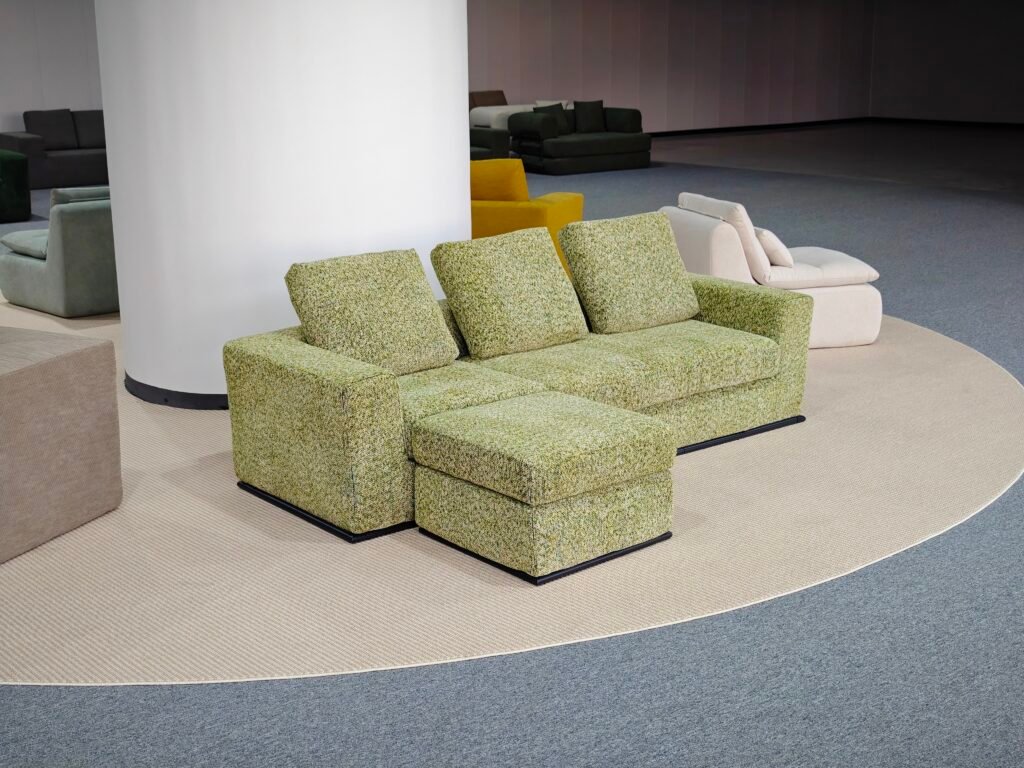
Introduction
In the B2B furniture sector, maintaining product integrity during compression is paramount—especially as compress sofas become a staple for brands prioritizing space-saving logistics, e-commerce efficiency, and sustainable supply chains. Just as glass bottle manufacturers engineer their products to withstand pressure and maintain quality during shipping1, furniture brands must adopt proven, structure-preserving compression techniques. This guide presents seven smart, B2B-focused methods to compress sofas without compromising their durability, comfort, or brand reputation.
1. Use High-Resilience Foam and Quality Materials
Begin with materials engineered for compression. High-resilience (HR) foam and latex retain their shape and rebound quickly after vacuum packing. Avoid low-density foams, which can deform or lose elasticity under pressure. For spring systems, use tempered steel with anti-fatigue coatings to ensure long-term performance post-compression.


2. Modular Disassembly Before Compression
Disassemble modular sofas into separate components (arms, backs, cushions) before compression. This reduces stress on joints and frames, distributes pressure evenly, and allows for tighter, safer packing. Label each module for easy reassembly—an important value-add for B2B clients handling bulk installations.
3. Vacuum Compression with Controlled Pressure
Employ industrial vacuum compressors calibrated for furniture. Gradually extract air to avoid abrupt pressure changes that could warp frames or damage upholstery. Use programmable machines to set optimal compression ratios for different sofa models, ensuring consistency across large B2B orders.
4. Strategic Placement of Protective Padding
Just as glass bottle suppliers use foam inserts and reinforced edges to prevent breakage1, wrap sofa corners, legs, and vulnerable sections with high-density foam or molded pulp protectors. This absorbs impact and prevents frame distortion during compression, transit, and unpacking.


5. Secure and Reinforce Structural Joints
Before compression, check all joints and fasteners. Use locking mechanisms or temporary bracing to prevent movement and reduce the risk of misalignment. For B2B shipments, include assembly instructions and spare fasteners to streamline on-site installation.
6. Moisture and Temperature Control
Compress sofas in climate-controlled environments to prevent moisture absorption and material degradation. Use vacuum-sealed, moisture-barrier packaging films to protect against humidity and temperature fluctuations during storage and shipping—key for international B2B logistics.
7. Rigorous Quality Assurance and Testing
Simulate compression, shipping, and decompression cycles in your quality control process. Test sofas for rebound, frame integrity, and upholstery resilience after multiple cycles. Document these results for B2B clients as proof of durability and compliance with industry standards.


Conclusion
Adopting these seven smart compression techniques enables B2B furniture brands to deliver space-saving sofas that arrive in perfect condition—ready for rapid installation and long-term use. By focusing on material quality, modular design, controlled processes, and robust testing, you safeguard both your product and your brand’s reputation in the competitive 2025 market. For more in-depth technical guides or supplier recommendations, let me know!